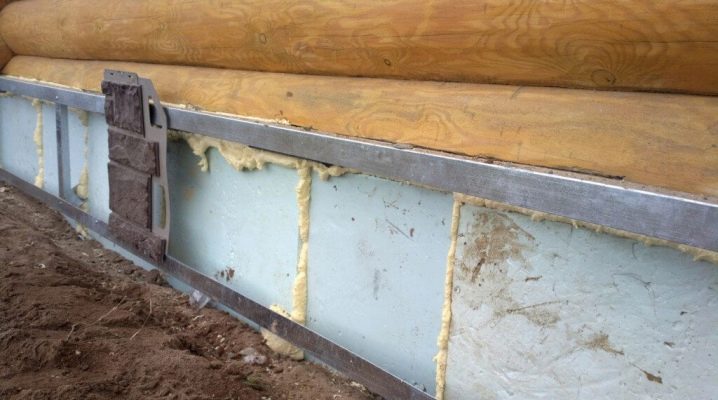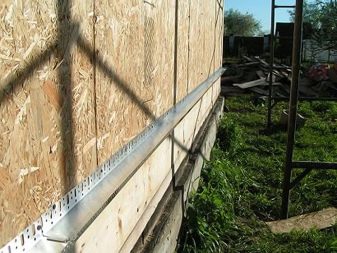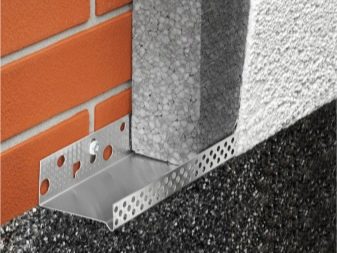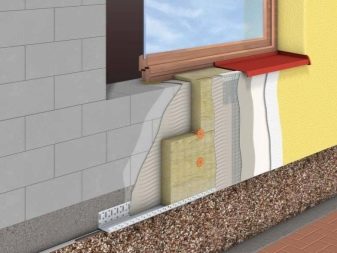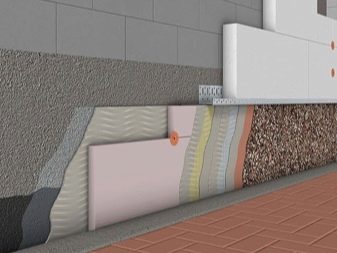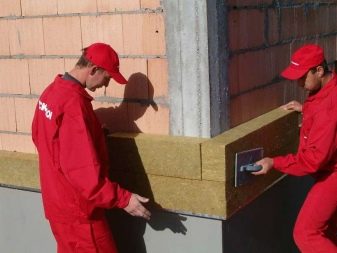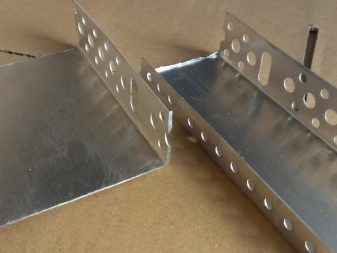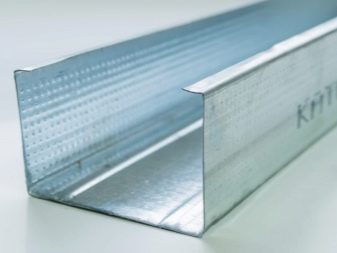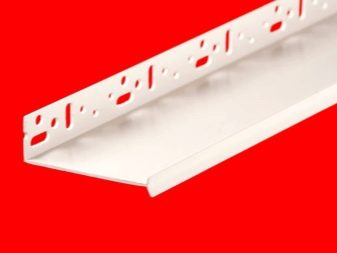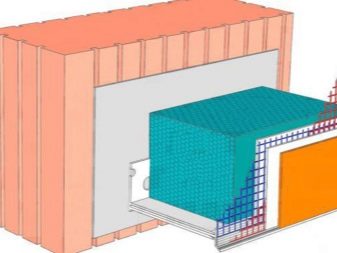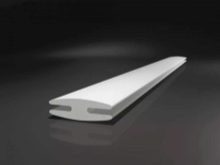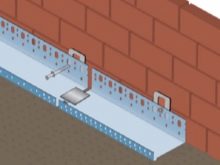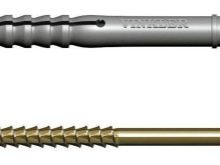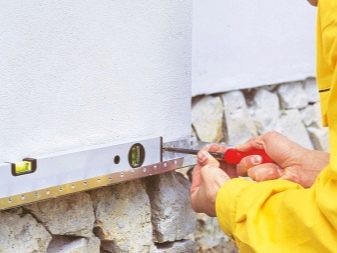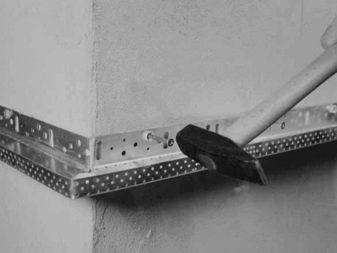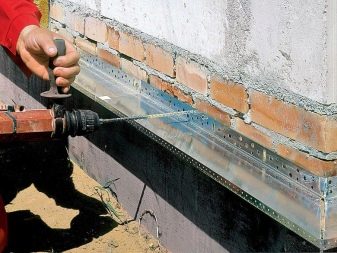Basement profile for insulation: types and characteristics
In the process of wall insulation the basement profile becomes the support of materials for decoration and thermal insulation. It also has a protective function. With the imperfections of the facade surface and its various defects, applying only the start profile is not enough, additional elements are required, with the help of which a straight and level line will be created.
What is it needed for?
The walls of the basement are exposed to temperature changes. Therefore, in both heated and unheated basement there is the possibility of condensation. It can negatively affect the surface. But also the lack of insulation of the basement causes significant heat loss in the room, which means that the expenses of residents for heating during the cold season will increase significantly.
The problem of excess costs and damage to the surface of the walls can be solved by using insulating materials on the basement floor. Insulation must be properly selected, for this it is necessary to study its varieties, quality, characteristics and properties.
You can highlight the main functions of the profile First of all, it serves as a solid foundation for the installation of thermal insulation materials. And with it you can eliminate the effect of moisture on the insulation, which will lead to a longer product life.
Finally, with the help of profiles, the outer area of the base is protected, where rodents can penetrate without its use.
Species
Experts note that in the case of independent warming of a house by tenants, the use of a basement profile is often neglected. This is a serious mistake. In this type of work, the use of a profiled base can prevent many problems during operation. The technology itself involves the use of these elements.
Currently, for works on the insulation of the base, you can use different types of profile.They can be divided into 3 main ones: these are aluminum products, PVC and two-part strips.
Aluminum Products
The base profile of this type is based on aluminum. Due to the material of manufacture, the product has excellent resistance to moisture.
Due to the special treatment of the surface of the element has a protective film that makes the material more resistant to physical stress. At the same time working with products requires care, as the material is easy to scratch, and this can lead to the formation of corrosive processes.
Products are made in the form of U-shaped slats of various sizes. The standard length is 2.5 meters, but the width can be different and be 40, 50, 80, 100, 120, 150 and 200 mm. For example, a basement profile with a thickness of 100 millimeters is used at the initial stage of insulation work, and also supporting decorative plates are installed on it.
Its use is relevant in the wet method of exterior finishing, when the surface is plastered, puttied and painted. Aluminum profiles for the base with a drip not only fix insulation materials, but also serve to drain water.
The thickness of this type of profiles ranges from 0.6 to 1 millimeter. Manufacturers give a guarantee on the goods for more than 30 years. The aluminum front profile is widely used and presented on the market in a wide range.
Aluminum profiles are produced by both domestic and foreign companies. Among Russian recognition won brands such as Alta-Profile, Rostec, Profile Systems.
PVC profile
In a form it is similar to aluminum profile levels. It is made of high quality plastic. The material is well tolerated by the effects of low temperatures and humidity, and is resistant to corrosive processes. Products do not deteriorate and are not deformed by temperature extremes. Another undoubted advantage is the lightness of the material, due to which it does not create problems during installation. And it also features a lower price category than aluminum products.
PVC basement profiles are most often used for independent finishing work. Their standard sizes are similar to aluminum materials. Most often for the decoration of private and country houses are used profiles of 50 and 100 millimeters, this figure depends on the thickness of the insulating material.The only drawback of plastic products is the lack of resistance to ultraviolet rays.
Two-piece bar
This base profile has its own characteristics. Consists of the front and rear parts of the U-shaped and L-shaped form. One of the shelves is equipped with perforations. This helps to install fasteners more reliably.
The front part must be inserted into the narrow groove. Important components are reinforcing glass mesh and drainage. Due to this design, it is possible to control the distance between the shelves.
Accessories
It often happens that the facade does not have a smooth surface. In this case, you must use additional elements. They help make the front line perfect. For aluminum and PVC profiles, there are connectors that look like plates with U-shaped edges.
If the product cannot adhere to a wall having an uneven surface, it is advisable to use compensators. This element has special holes for installation. The thickness may be different and depends on the gap between the profile and the base.
To fix the starting profile, you can use dowels. In the case when the compensators are not enough, you can use lining washers. Their diameter can be different and is also selected depending on the width of the gap.
Installation
The installation of profiled material for the base can be done both with your own hands, and with the help of specialists. The cost of the work can be calculated by FER. It includes a full range of rates. Although there are no particular difficulties in this process, adherence to technology is an important factor, because it depends on how correctly and reliably the materials are fixed.
The first step is to apply the markup. This can be done with a special level and rope. From one side of the base to the other, a fixed rope is stretched horizontally, and marks are made along its length, in the place of which holes will be drilled. It should be borne in mind that the work will require a smaller drill bit than the screws themselves, which will be screwed.
The ends of the extreme profiles should be cut at an angle of 45 degrees. This will help make a 90 degree straight joint.
The installation of the base profile must be started from the corner of the building. When installing the batten, you first need to fix the bars. They should be located strictly horizontally, and the width - similar to the width of the insulation. The lower timber must be placed parallel to the ground.
If necessary, use compensators. Before final fixing each product must be attached to the base. Further, for mounting screws are installed, and the profiles are securely fixed. To fasten the elements together, strips are used. If a base with a drip is used, it will help to prevent the ingress of moisture and precipitation under the system.
When the work is completed, it is time to install insulation materials. Insulation is located in the recesses of the profile. If it is necessary to glue it, then glue is applied first. After completion of the installation work, it is necessary to fill the gaps between the profile and the base with special foam having moisture-proof and frost-resistant properties.
How to install a base profile, see the video below.
